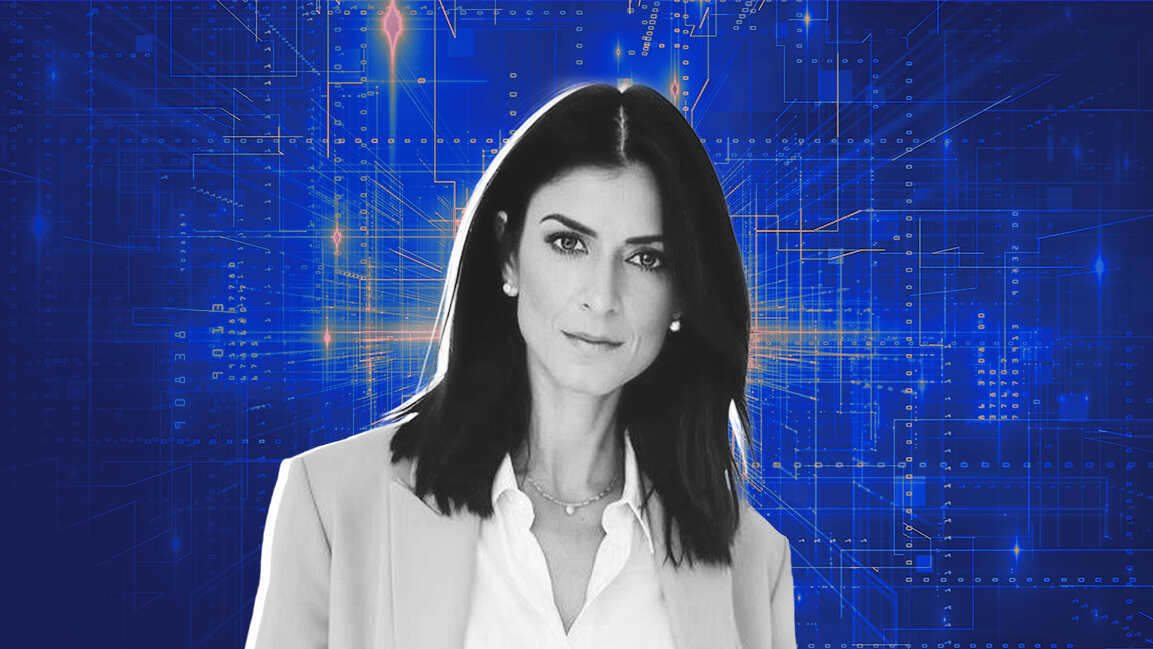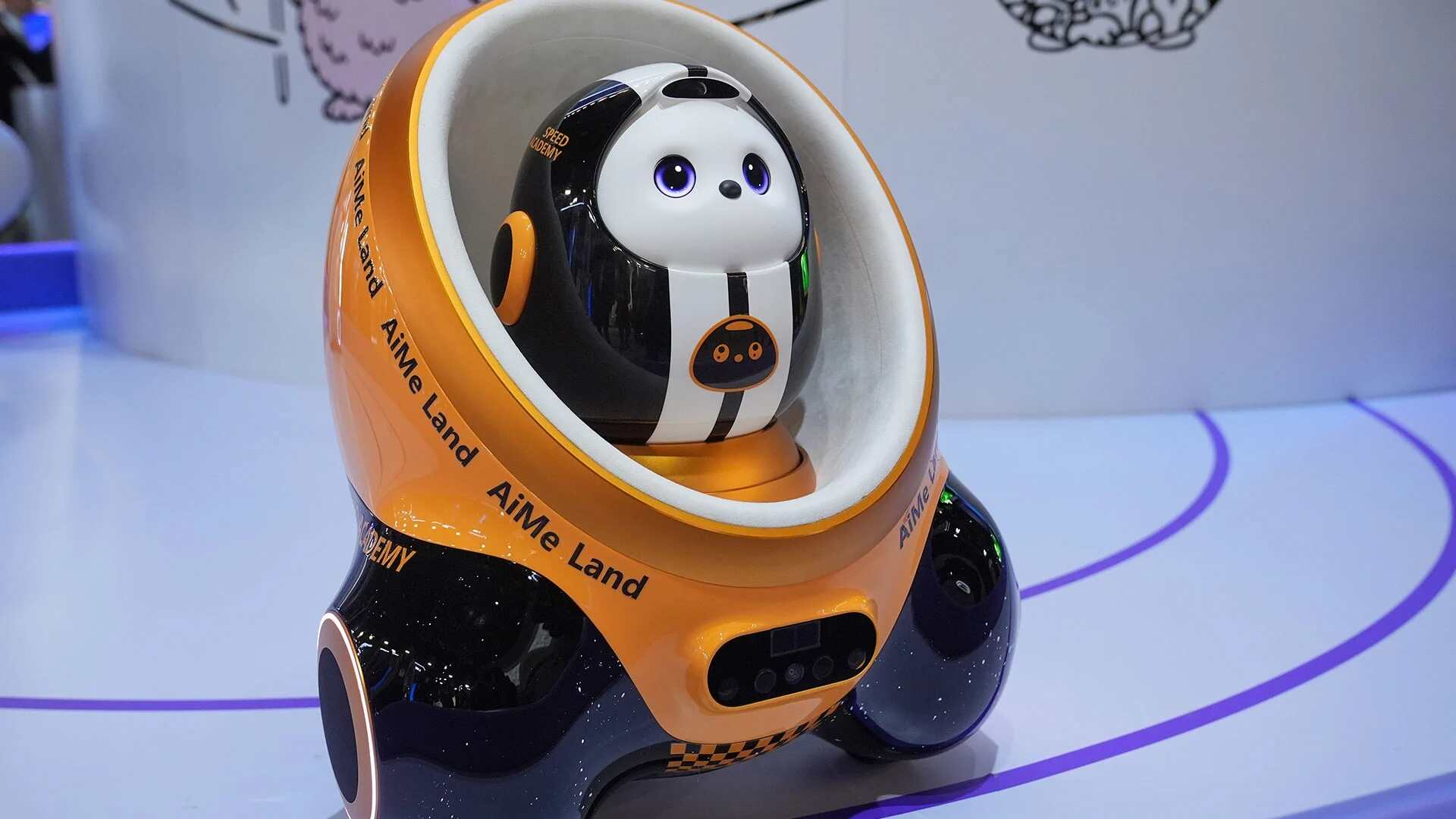- | 10:00 am
How TII is driving strategic sovereignty through AI and advanced technologies
Can new AI breakthroughs drive sustainable growth and digital leadership?

Transformation hinges as much on people as it does on technology, and the real challenge with artificial intelligence isn’t whether machines will think, but how we’ll think with them. While the global narrative often wrestles with AI’s distant disruptions, a more pragmatic dialogue is shaping how to proactively steer this powerful technology without relinquishing control.
This isn’t a passive observation of emerging trends but a strategic engagement with AI’s practical challenges. From profound workforce shifts to complex ethical dilemmas, all aim to turn innovation into tangible, positive outcomes. The conversation has moved beyond speculation, demanding clear answers grounded in the everyday realities of AI integration.
In an exclusive conversation, Dr. Najwa Aaraj, CEO at Technology Innovation Institute, shares that the path forward calls for a balance between innovation and caution, speed and deliberation.
The future of AI depends not only on what the technology can do but also on how people choose to shape it. This means developing ethical frameworks and governance models that anticipate challenges before they arise, ensuring technology serves society’s broader goals.
STRATEGIC INNOVATION DRIVING TECHNOLOGICAL SOVEREIGNTY
TII is still a relatively young research lab, having been established just five years ago alongside the formation of the Advanced Technology Research Council. The council was created with a clear mandate to advance research and development, particularly applied R&D, within the country.
Aaraj says, “Its mission is to position Abu Dhabi and the UAE prominently on the global R&D map, develop a thriving ecosystem, deliver value, contribute to the knowledge economy and non-oil GDP, and establish global and local partnerships in the research and development sector.”
After five years, TII has made significant progress, primarily through strong partnerships. It accounts for about 90% of the Advanced Technology Research Council’s resources, highlighting its central role.
Benchmark-wise, TII compares to leading research organizations like Fraunhofer, Stanford Research Institute, and other multi-domain tech institutes.
She explained that technological development tends to follow a certain pattern globally. “If you look at technological development today, short-term technologies are typically engineering-focused, and we don’t focus on those at TII. That’s not what we aim to do.” Instead, TII concentrates on medium to long-term, moonshot projects, approaching them from three different angles.
“We are the R&D institute of the country, and we reflect the country’s vision and priorities,” she said, emphasizing the goal of achieving technological sovereignty, especially in areas where export controls, cost, or limited access pose challenges. “And I think today, we have achieved a lot of such technologies, whether they’re public or not, that’s another story.”
Aaraj outlined three key considerations: “What is strategic? What will give you a strategic advantage? What will help you, through ownership of these technologies, to advance humanity, social sciences, climate action, and life in general?” This includes fields like quantum, AI, and cyber. The third angle aligns with their mandate: “What will help us contribute to the non-oil GDP or the knowledge economy of this country?” Technologies with strong commercial potential, such as water tech, robotics, security, and materials, fit here. “Overall, this is how we define innovation. We have very ambitious roadmaps,” she added.
Aaraj emphasized the need to deliver tangible results alongside innovation. “The more we grow, the more focused we become. The more you start seeing things being commercialized.” She pointed to recent efforts like Make it in the Emirates and global forums, where TII showcased technologies already commercialized.
Of over 100 R&D projects, more than 20 have been industrialized, a high conversion rate, she said.
“If you look at benchmarks, the probability of conversion after four years is usually low, but I believe we have succeeded in achieving that.”
Aaraj explained that her background has always been applied. “My background is in cryptography, but I have always looked at it from an applied perspective, looking into applied crypto and how we can integrate it into systems and embedded system security.”
This practical mindset is key at TII, where even long-term research is viewed through innovation and real-world use. “We look at all the research topics we tackle from an innovation perspective, but just as importantly, we look at how they serve our clients.” Balancing both, she said, is “a double-edged sword.”
Aaraj reflected on how her technical background influences her leadership style. “Because as a technical person, you tend to get too much into the details. Now, after 20 years, I can take a step back and look at the bigger picture.”
However, she noted that knowing when to dive back into the details remains important, even if it’s challenging for work-life balance. This balance helps her stay on top of things.
BREAKING THE BARRIER
Aaraj shared a few breakthroughs, focusing on those she was able to publicly discuss. One notable example is their GPS-less navigation system, which was first introduced at IDEX. “The commercial brand is called Perceptra, and we showcased it at Make it in the Emirates,” she said.
Initially developed for aerial use, the system now supports ground and marine navigation. “Most navigation systems rely on GPS, but our payload also applies to ground and marine environments,” Aaraj explained.
Using visual odometry and dead reckoning, it works where GPS is jammed or spoofed. She highlighted its broad applications, from law enforcement and defense to delivery in rural areas and search and rescue in remote locations.
She emphasized post-quantum cryptography as a critical national security focus. “Quantum computers will break current cryptographic systems,” Aaraj said, stressing the urgency of migrating now since sensitive data is stored long-term. TII is among the few institutes, and the UAE is one of the first countries, to establish dedicated centers for this transition. She highlighted TII’s global role, noting their contributions to six of the 14 NIST digital signature candidates advancing in the competition.
Aaraj highlighted Falcon and its large language models as a significant achievement, placing both TII and the UAE on the global stage. “Falcon consistently ranks among the top models in international benchmarks,” she said, linking its success to sovereignty under the “Made in UAE for the UAE” principle.
What sets Falcon apart is its open-source nature, which allows the technology to be accessible to the wider community and localized for specific regions and contexts. Aaraj noted that Falcon’s significance extends beyond being a sovereign technology. “It reinforces AI safety, ethics, and bias reduction research.”
She also mentioned TII’s work in swarm robotics, including multi-drone systems applied to search and rescue, law enforcement, and agriculture.
Highlighting a recent outcome, she said, “Based on our work in agriculture, VentureOne has launched a climate tech and agri-tech company called Novat AI.” Their first project aligns with the UAE’s environmental sustainability and climate goals, “particularly supporting the target of planting 100 million mangrove trees by 2030,” Aaraj added.
Novat AI’s flagship solution is mangrove seeding mapping, which identifies optimal locations for mangrove planting. Powered by an AI platform that analyzes soil, tides, satellite, and LIDAR data, the seeding is executed by drones equipped with robotic and AI systems, along with ongoing monitoring capabilities.
Aaraj emphasized this as a direct contribution to climate tech and environmental objectives.
SOLVING THE PROBLEM STATEMENT
Aaraj highlighted the key role of the Advanced Technology Research Council (ATRC) in prioritizing research problems. “This is where I would say the role of the entire ATRC comes into play,” she said. Reflecting on the institute’s early days, she added, “When we started five years ago, we built our roadmaps based on what we believed were the needs and the market demands.”
She explained that TII’s focus areas arise from combining strategic global technology trends and direct engagement with clients. “We look at the global tech landscape, strategic fields like quantum, AI, cyber, and others,” she said. As Aspire began scaling, the institute deepened its collaboration with clients to understand their use cases. “We use a push-and-pull approach: we bring the technology we believe is relevant, then tailor it to fit the client’s needs.”
Many clients today, especially larger ones, demonstrate high technological sophistication. “When engaging with them, you can discuss how a quantum-inspired algorithm could solve a particular computational challenge they face,” she noted. This level of readiness fosters an ideal environment for advancing and deploying cutting-edge solutions. “We’re really fortunate to have that environment.”
On the pull side, Aaraj explained how TII adapts when clients present challenges beyond their current focus.
“We may not be working on it yet, but we have the capabilities and expertise needed,” she said, citing an example where TII’s robotic stack was customized to meet a client’s incident response requirements. “We start with an initial stack that must be tailored for a specific use case and player.”
Aaraj emphasized aligning research with client needs and broader national priorities. “So, we work with you on it. This is where you know the use case truly serves the client.” She noted that Aspire and VentureOne carefully assess the commercial viability of each initiative, adding, “because in the end, we don’t want to pursue something unless it’s critical to the UAE’s national security.”
She also stressed the need for scalability and long-term impact. “We don’t want to work on technologies that are one-offs.” Acknowledging the complexity, she said, “It’s a balance, and it’s not easy at all. You’re trying to develop the tech, advance it, and invest in long-term moonshots, but at the same time, you need to ensure a return on investment for all the research funding you have.”
SECURING THE FUTURE OF AGENTIC AI
Aaraj noted that while agentic AI is gaining focus, generative AI remains important. The field is shifting from large language models, including open-source ones, toward AI agents like DeepSeek.
This shift emphasizes optimization, creating models that match or exceed current capabilities with less computational power through software improvements and techniques like chain-of-thought reasoning. She highlighted that this will enable more AI deployment at the edge. Referencing a Nvidia CEO’s visual, Aaraj explained the evolution from LLMs to agentic AI and then to robotics, a transition she sees as particularly significant.
Aaraj also highlighted the rising importance of visual language models, action models, and robotics, describing the expansion of large language models into these areas as “another key space worth investing in.”
Regarding agentic AI, she called it “another revolution in AI, more focused on the application layer,” where AI agents will be increasingly deployed across diverse tasks.
She emphasized that in fields like e-commerce, security, and vulnerability management, security and privacy take on a fundamentally different dimension with AI agents.
“With models, it’s one thing, but with agents, you’re dealing with systems that are already capable of making decisions independently,” she said.
Not only will these agents make decisions independently, but they will also have access to your data, machines, and networks. Aaraj stressed that without proper access management, privilege escalation controls, thorough software vulnerability assessments, and robust identity, access management, and authorization protocols, “We’re going to face serious challenges with agentic AI.”
She clarified her perspective: “You can see the lens I view things through: I’m not an AI expert, I’m a security expert. So for me, this is a critical area that must be addressed.”
While hardware plays a role, especially in drones or other edge devices, it’s not the core factor. “All drones have a specific shape and aerodynamics that determine their speed and range,” she said, “But the brain of the autonomous system isn’t the hardware itself.”
Instead, the real focus is on the AI-based software running on the GPU, CPU, or whichever microchip is inside. This software provides intelligence, makes decisions, navigates, localizes, manipulates, performs tasks like face recognition, and drives all actions. “That’s where the real importance lies,” she emphasized.
Aaraj also explained that sustainability at TII has multiple dimensions. The Renewable and Sustainability Research Center leads efforts in areas such as water management and solar energy projects, including energy and grid management. At the same time, as a major developer of large language models, TII remains conscious of the significant compute power these models demand.
Comparing models from two years ago to today reveals a significant reduction in compute usage and power consumption. Smaller, more efficient models now deliver better performance through extensive optimizations. TII is also exploring emerging computing paradigms, such as neuromorphic computing, spiking neural networks, and brain-inspired architectures, to further enhance energy efficiency. Additionally, TII is likely the first institute in the Arab region to operate a quantum computer, a technology that promises substantial gains in energy efficiency.
UAE AS A TECH HUB
TII employs around 1,200 people representing 83 nationalities, cultivating a rich and diverse culture built on deep expertise. This diversity, visionary leadership, and a focus on advanced technologies have made TII and the UAE a magnet for global talent.
She stresses, “You can’t operate in isolation. There is a strong, clear, and focused vision on advancing technologies, spanning R&D investment, applied research, commercialization, and industrialization. We see this reflected across TII, VentureOne, and the broader industrial ecosystem here.”
She highlights a growing innovation ecosystem, with more startups relocating to and being founded in the UAE, alongside rising accelerators and funding across the UAE, GCC, and MENA.
On investments, she stresses substantial, well-founded commitments in AI, quantum, and advanced tech. She also notes a major shift as global multinationals in AI, semiconductors, and cybersecurity increasingly establish local infrastructure and engineering teams, something almost unimaginable just two years ago.
BUILDING RESILIENCE AND REAL IMPACT
Encouraging women in STEM depends on multiple factors, with the UAE’s context playing a crucial role. “By default, a large percentage of women, around 40% to 50% %, are present in younger workforce groups and university STEM programs,” she explained. At TII, women comprise about 25% to 30% of the research staff, “which is a very, very high number.”
Leadership roles are earned, not symbolic: “We ensure they hold leadership positions, and everyone deserves it. It’s not about filling quotas or hiring women just for appearances, absolutely not.” Whether from the UAE or abroad, “they genuinely deserve their roles. We support and strengthen their leadership.”
She acknowledges that women often face greater family demands as their careers progress. Supporting women in STEM is a priority at TII through initiatives like ATRC’s NextTech program, which offers mentorship, postgraduate education, and clear career paths for high-potential graduates of all genders. Aaraj urges women to view mistakes as growth opportunities, noting men’s greater ease with trial and error builds resilience. Despite biases, she highlights that experience strengthens women’s resolve and praises the UAE’s supportive environment, marked by zero tolerance for inappropriate behavior and genuine backing for women in meaningful roles.
Looking ahead to next year, she expects the focus to be on tangible achievements in AI and quantum technologies. “I want us to highlight what we’ve commercialized across all nine areas we’re working on,” she says, aiming to see these technologies deployed in real-world use cases across sectors like law enforcement, energy, healthcare, space, and aerospace, moving from development to industrialization and production.







































